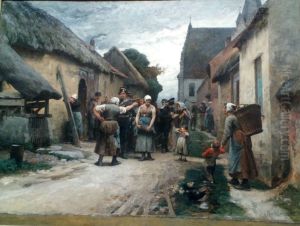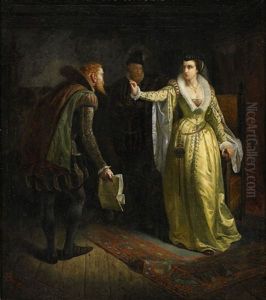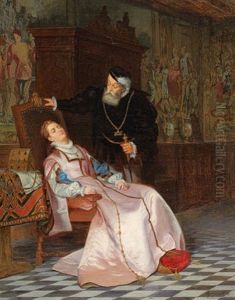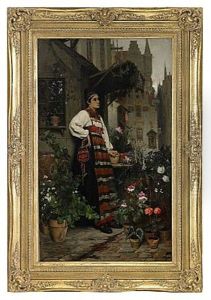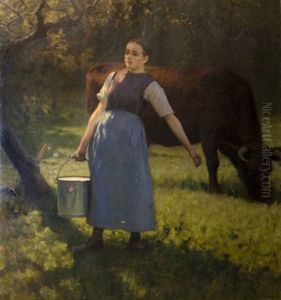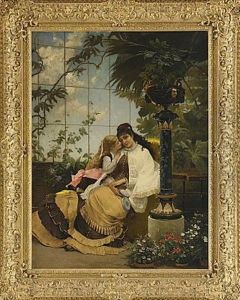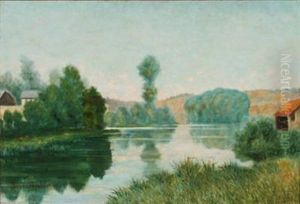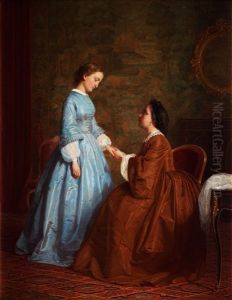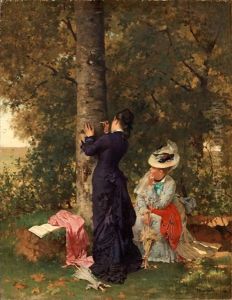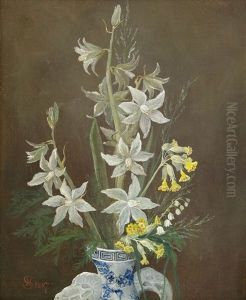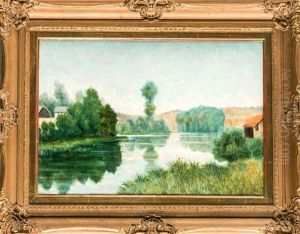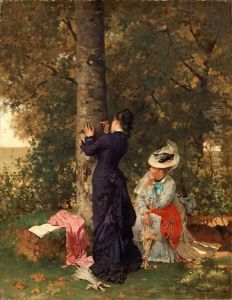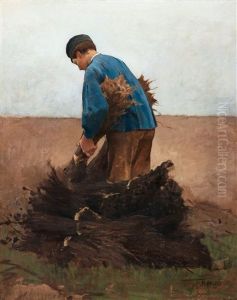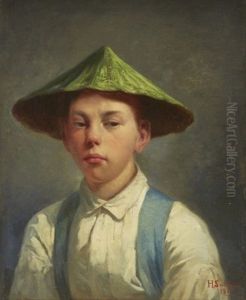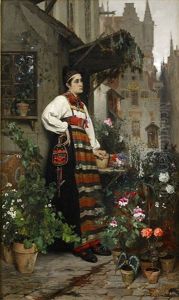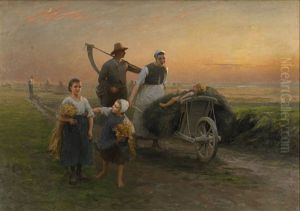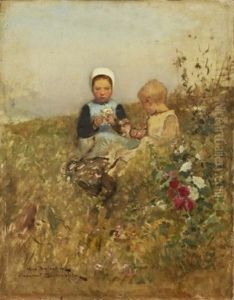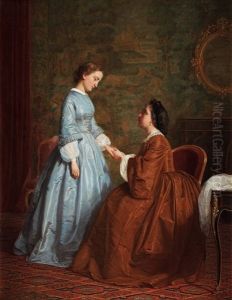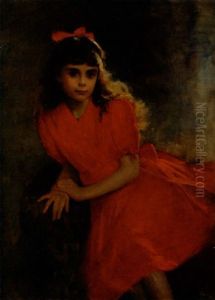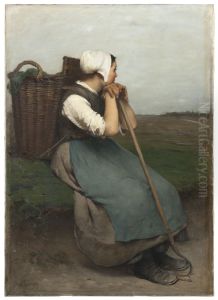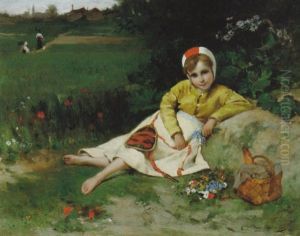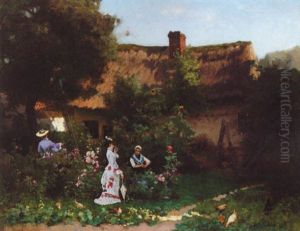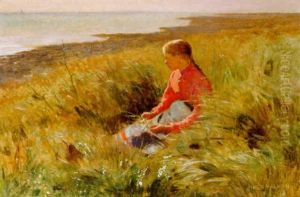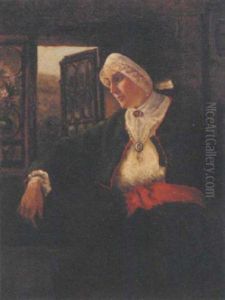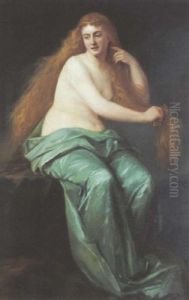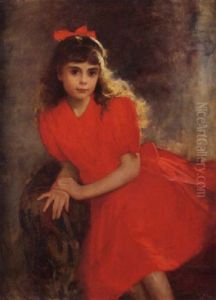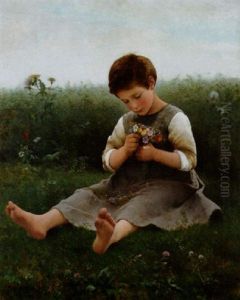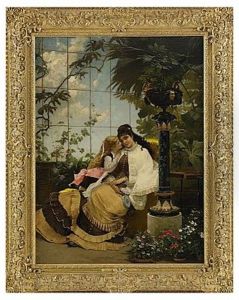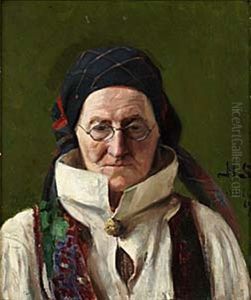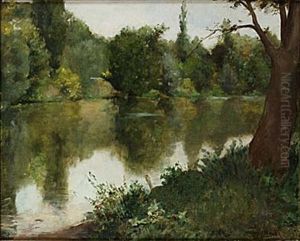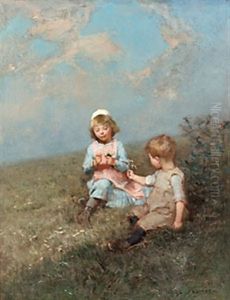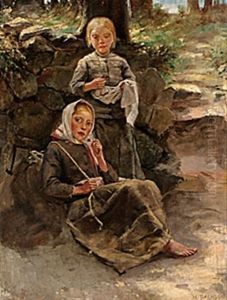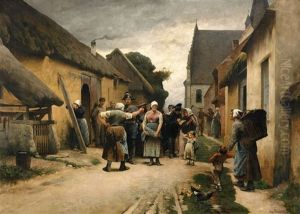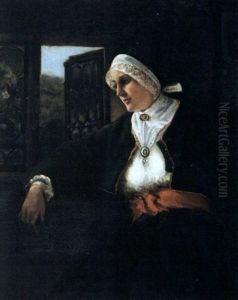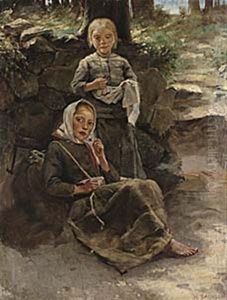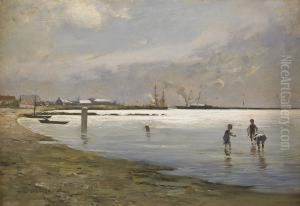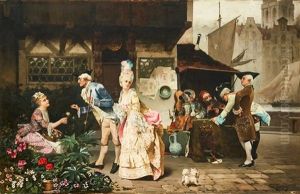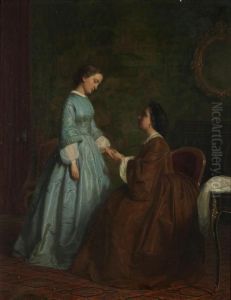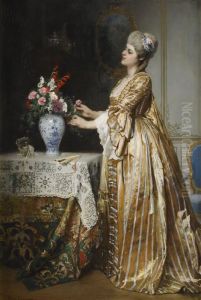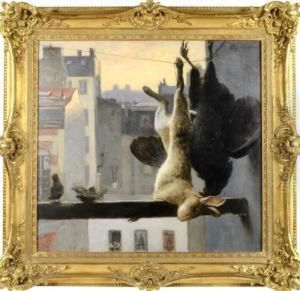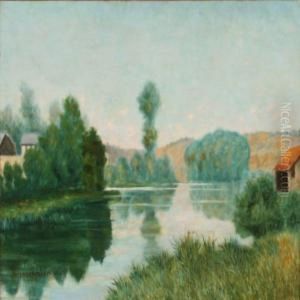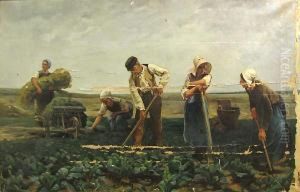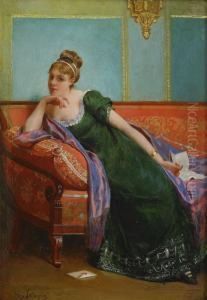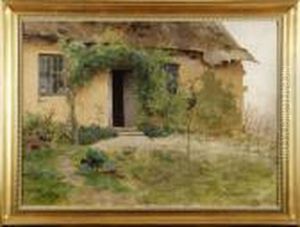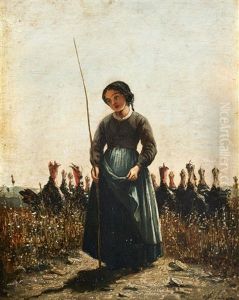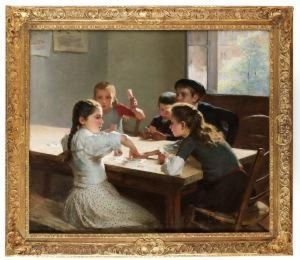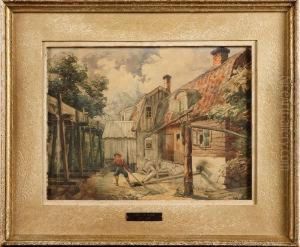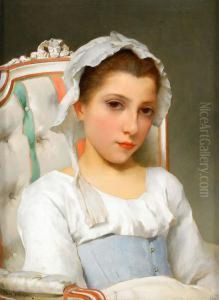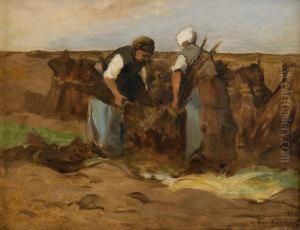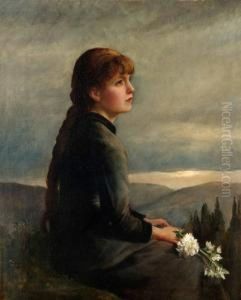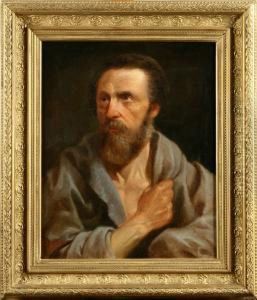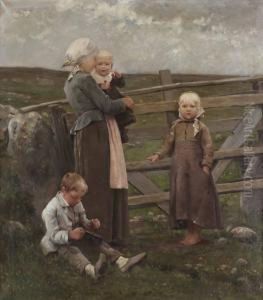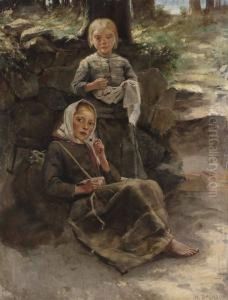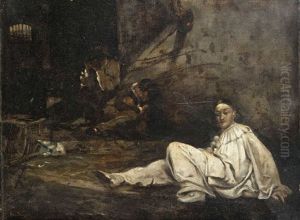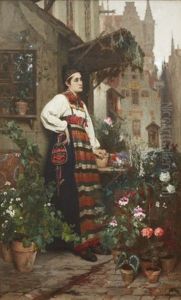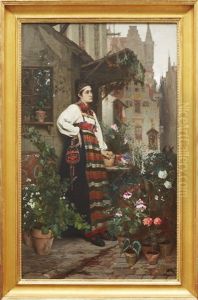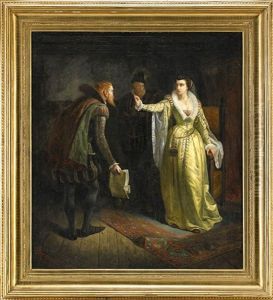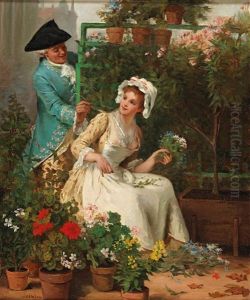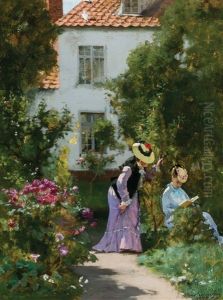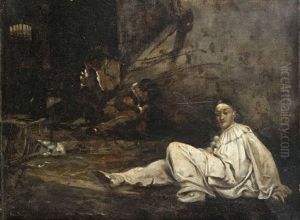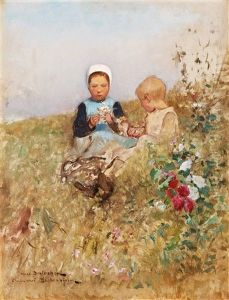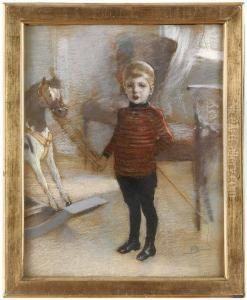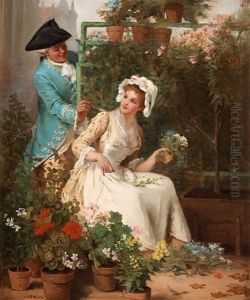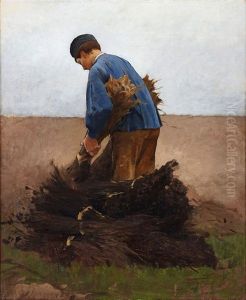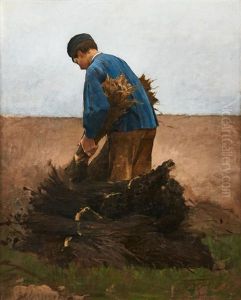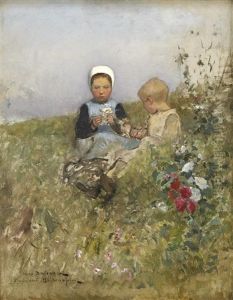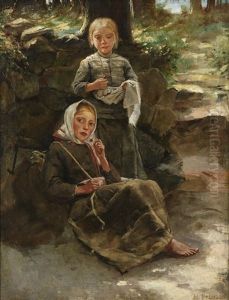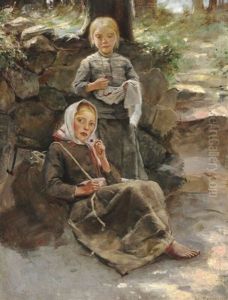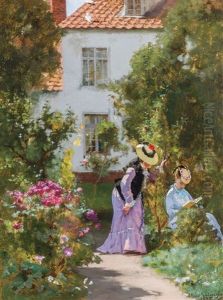Hugo Salmson Paintings
Hugo Salmson, a Swedish artist known for his genre paintings and portraits, was born in 1843 in Stockholm, Sweden, and passed away in 1894. His career blossomed during a period when Swedish art was transitioning and absorbing influences from abroad, particularly France.
Salmson's early life was marked by his education at the Royal Swedish Academy of Arts in Stockholm, where he honed his skills in painting. However, like many of his contemporaries, Salmson sought to expand his artistic horizons beyond the borders of Sweden. This quest led him to Paris, the epicenter of the art world in the 19th century. In Paris, he was deeply influenced by the French realists and the emerging Impressionist movement. These experiences significantly shaped his style, infusing his work with a sensitivity to light, color, and everyday life that was somewhat distinct from the traditional Swedish painting of the time.
Throughout his career, Salmson became known for his ability to capture the nuances of social interactions and the subtleties of human emotion. His genre scenes, often depicting rural Swedish life, are celebrated for their detailed portrayal of the customs and the environment of his homeland. These works not only provided a window into the lives of ordinary Swedes but also reflected the broader societal shifts occurring as Sweden industrialized and modernized.
In addition to his genre paintings, Salmson was an accomplished portraitist. His portraits are characterized by their psychological depth and the skillful use of light to capture the essence of the sitter. Despite his success, Salmson's work was, for a time, somewhat overshadowed by his more famous contemporaries. However, in recent years, there has been a renewed interest in his oeuvre, with art historians and collectors alike appreciating the unique blend of Swedish tradition and French influence that defines his work.
Salmson's contributions to Swedish art were significant, and he remains an important figure in the country's artistic heritage. His paintings are held in high esteem and can be found in museums and private collections in Sweden and beyond. Hugo Salmson's legacy is that of an artist who bridged cultures, capturing the spirit of his times while remaining deeply rooted in the traditions of his homeland.
